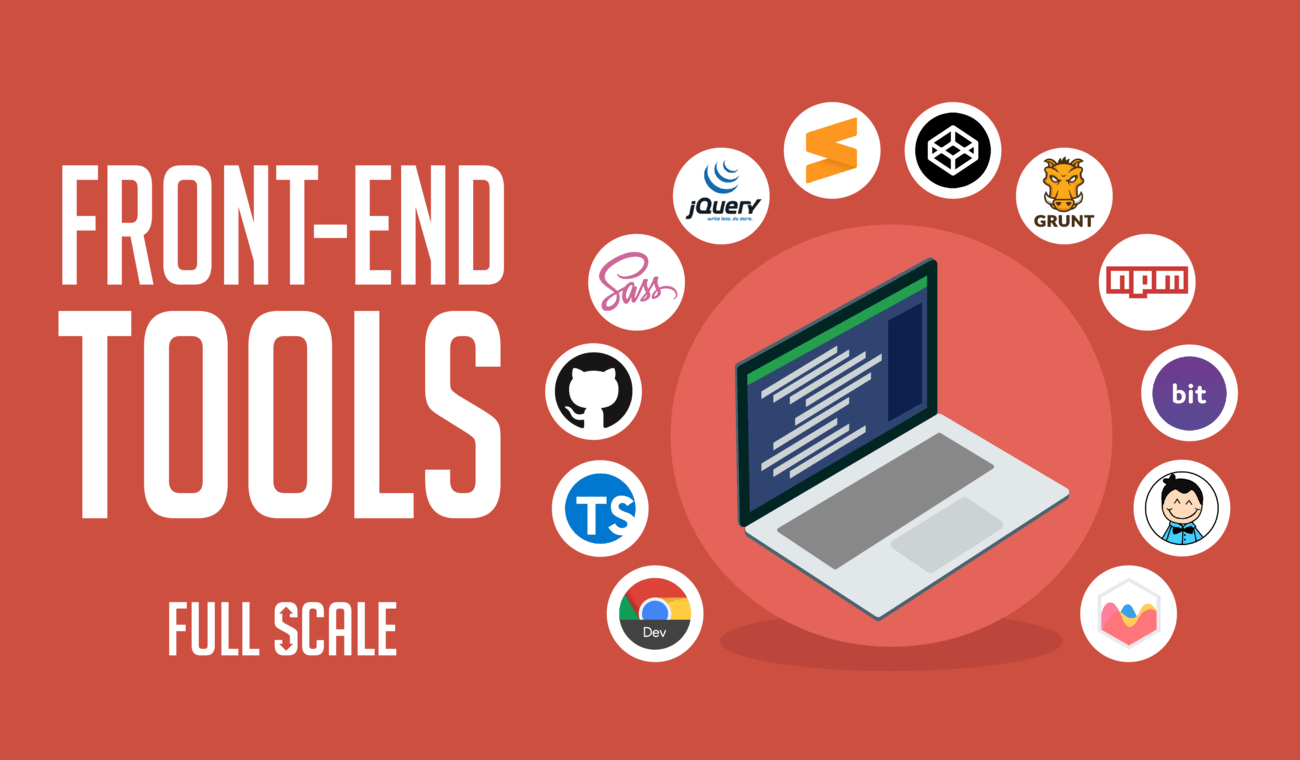Front end developers play a crucial role in creating captivating and user-friendly websites. But have you ever wondered what softwares they use to bring those designs to life? In this article, we will explore the essential tools and softwares that front end developers rely on to code, design, and optimize websites. From text editors to version control systems, get ready to take a peek into the toolkit of these tech-savvy professionals. Front end developers rely on a variety of software tools to efficiently and effectively create web applications and websites. These tools not only help to streamline the development process, but they also enhance productivity and improve the overall quality of the final product. In this article, we will explore some of the most commonly used software tools by front end developers, including IDEs and text editors, version control systems, package managers, command line tools, browser developer tools, CSS preprocessors, JavaScript frameworks, UI libraries, graphic design tools, and prototyping tools.
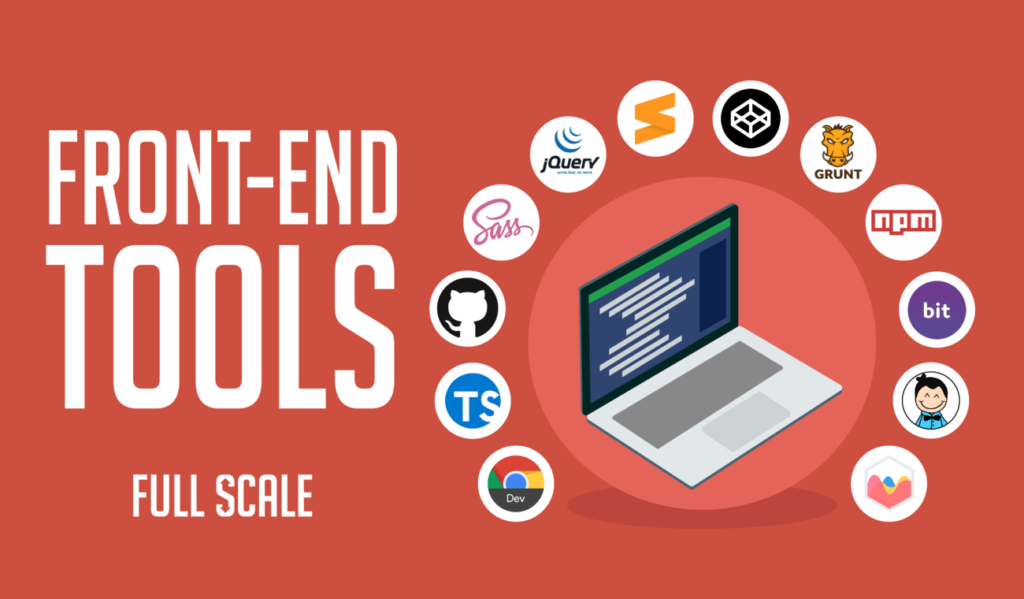
This image is property of fullscale.io.
Integrated Development Environment (IDE)
An Integrated Development Environment, or IDE, is a software application that provides comprehensive and integrated tools for software development. It typically includes a text editor, a code debugger, a compiler, and other features that help developers write, debug, and test their code. Some popular IDEs used by front end developers include:
- Visual Studio Code: This lightweight and highly customizable IDE has gained tremendous popularity in recent years. It offers a wide range of features, such as built-in Git integration, IntelliSense for code completion and error checking, and a vast library of extensions.
- WebStorm: Developed by JetBrains, WebStorm is a powerful IDE specifically designed for web development. It provides advanced JavaScript and CSS support, as well as the ability to quickly navigate through large codebases.
- Atom: Known for its simplicity and extensibility, Atom is an open-source text editor that can be easily customized to suit individual preferences. Its integration with GitHub allows for seamless collaboration and version control.
Text Editors
While IDEs provide an all-in-one solution for development, many front end developers prefer to work with lightweight text editors that offer simplicity and flexibility. Here are three popular choices among front end developers:
- Sublime Text: Utilized by developers across various domains, Sublime Text is highly regarded for its speed, ease of use, and powerful customization options. Its vast array of plugins allows for seamless integration with different languages and frameworks.
- Visual Studio Code: As mentioned earlier, Visual Studio Code can also be used as a standalone text editor. Its intuitive interface, extensive library of extensions, and built-in Git integration make it a popular choice among front end developers.
- Notepad++: Known for its simplicity and low resource usage, Notepad++ is a simple yet powerful text editor with support for many programming languages. It offers features like syntax highlighting, auto-completion, and multiple tabs for easy navigation.
Version Control
Version control is a vital aspect of software development that allows developers to manage and track changes made to their codebase. It helps in collaboration, maintaining a history of changes, and seamlessly deploying updates. The two most widely used version control systems in the industry are Git and Subversion (SVN).
Git
Git is a distributed version control system that provides excellent scalability, performance, and a wide range of features. It allows developers to work on the same codebase simultaneously, merge changes, and easily track and revert revisions. With Git, developers can create branches to work on specific features independently and then merge them back into the main codebase. Platforms like GitHub and GitLab provide hosting services for Git repositories, making it easier for teams to collaborate and share their projects.
Subversion (SVN)
Subversion, also known as SVN, is a centralized version control system. While it may not be as popular as Git, it is still widely used in certain organizations and industries. SVN offers features like atomic commits, easy branching and merging, and file locking to prevent conflicts when multiple developers are working on the same file simultaneously. Although not as distributed as Git, SVN can still be a solid choice for managing code repositories, especially for teams that prefer a centralized model.
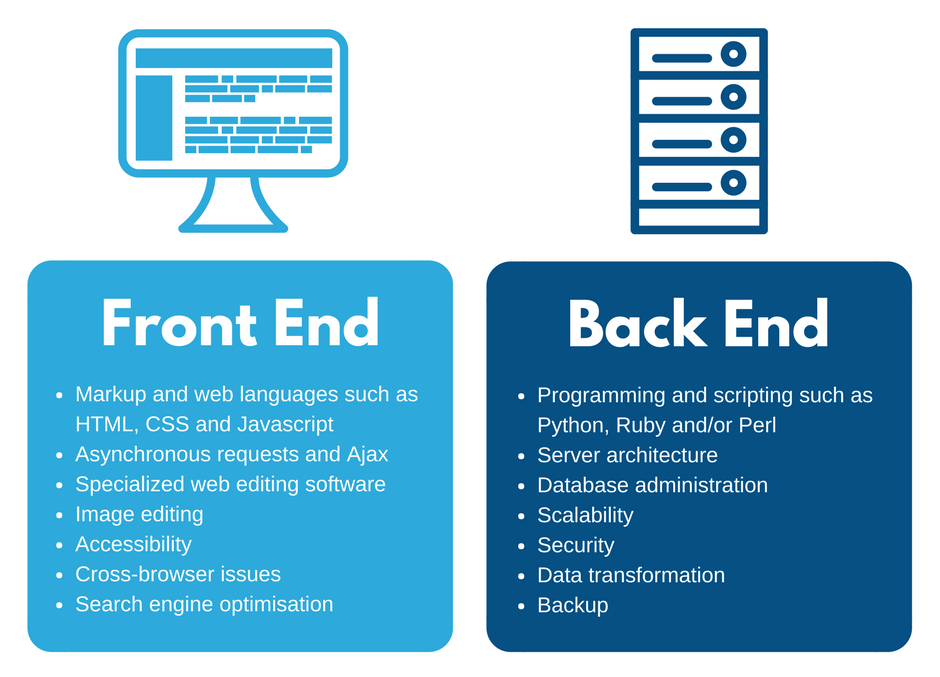
This image is property of i0.wp.com.
Package Managers
Package managers are software tools that automate the process of installing, upgrading, configuring, and removing software libraries and dependencies. They play a crucial role in front end development by allowing developers to easily manage and reuse third-party packages and dependencies. Two popular package managers used by front end developers are npm and Yarn.
npm
npm, short for Node Package Manager, is the default package manager for Node.js, a popular JavaScript runtime environment. npm allows developers to install, share, and publish packages written in JavaScript. It provides a vast repository of packages, making it effortless to include external libraries in your projects. With its command-line interface and extensive documentation, npm is widely adopted by front end developers.
Yarn
Yarn is another package manager that was developed by Facebook to address some of the limitations of npm. Yarn offers improved dependency management, faster package installation, and deterministic builds, making it an attractive alternative to npm. With its caching and parallelization features, Yarn excels in speeding up the installation and updating of packages, particularly in large projects.
Command Line Tools
Command line tools are essential for front end developers, enabling them to perform tasks efficiently and automate repetitive actions. Some popular command line tools used in front end development include Webpack, Gulp, and Grunt.
Webpack
Webpack is a powerful and widely used module bundler that allows developers to package assets, such as JavaScript, CSS, and images, for use in a web application. It can dynamically load modules, optimize assets for production, and enable hot module replacement for faster development. With its extensive plugin system and configuration options, Webpack provides a flexible and efficient way to manage dependencies and build complex applications.

This image is property of media.geeksforgeeks.org.
Gulp
Gulp is a popular task runner that helps automate repetitive tasks in front end development. It allows developers to define and run tasks written in JavaScript, such as minification, compilation, and live reloading. Gulp is known for its simplicity and readability, allowing developers to create and customize their build pipelines easily.
Grunt
Grunt is another widely used task runner that automates scripting tasks in front end development. Like Gulp, Grunt enables developers to define tasks in JavaScript and run them with a simple command. Grunt offers a wide range of built-in plugins and a vast ecosystem of community-contributed plugins, making it a flexible and extensible tool for automating build processes.
Browser Developer Tools
Browser developer tools are indispensable for front end developers as they provide a suite of tools for debugging, inspecting, and optimizing web applications. The two most commonly used browser developer toolsets are Chrome DevTools and Firefox Developer Tools.
Chrome DevTools
Chrome DevTools is a set of web development tools built into the Google Chrome browser. It offers a rich set of features, including inspecting and modifying the DOM, profiling performance, debugging JavaScript, and analyzing network requests. DevTools also provides a plethora of additional features like device emulation, auditing for accessibility and performance, and remote debugging, making it a comprehensive toolset for front end development.
Firefox Developer Tools
Firefox Developer Tools, also known as Firebug, is a similar set of tools provided by Mozilla Firefox. It offers features such as inspecting and editing the DOM, analyzing network requests, debugging JavaScript, and visualizing layout and style information. Firefox Developer Tools also provide a Web Console for running JavaScript in the context of a web page and a Shader Editor for debugging WebGL shaders.
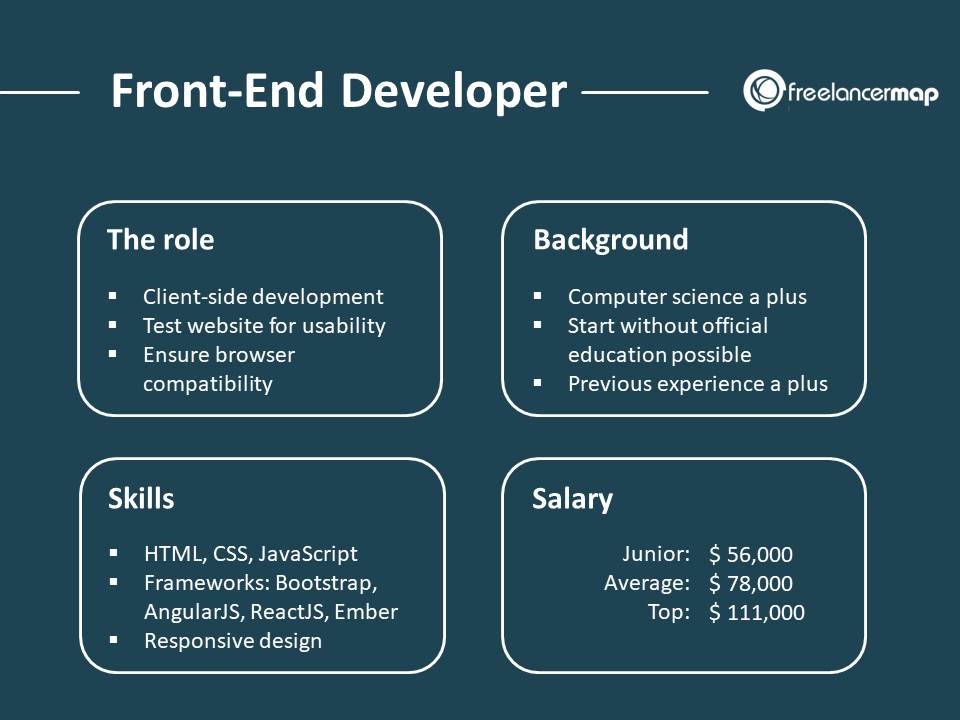
This image is property of www.freelancermap.com.
CSS Preprocessors
CSS preprocessors are tools that extend the functionality of CSS by adding features like variables, mixins, and nested rules. They help front end developers write more maintainable and efficient CSS code. Some popular CSS preprocessors used by front end developers include Sass, Less, and Stylus.
Sass
Sass, which stands for Syntactically Awesome Style Sheets, is one of the most widely used CSS preprocessors. It introduces variables, nested rules, mixins, and other features that make it easier to write reusable and modular CSS. Sass provides a wide range of functions and an extensive library of third-party frameworks and extensions, making it a powerful tool for front end development.
Less
Less, short for Leaner CSS, is another popular CSS preprocessor that offers similar features to Sass. It allows developers to write more organized and maintainable CSS code by introducing variables, mixins, and nested rules. Less is compatible with all major browsers, and its extensive ecosystem of plugins and frameworks makes it easy to integrate into existing projects.
Stylus
Stylus is a CSS preprocessor that emphasizes simplicity and flexibility. It offers a clean and expressive syntax, which can be particularly appealing to front end developers who value conciseness and readability. Stylus supports features like variables, mixins, and nested rules, and it provides a vast library of plugins and extensions for enhanced functionality.
JavaScript Frameworks
JavaScript frameworks are essential tools for front end development, enabling developers to create complex, interactive, and scalable web applications. Some of the most widely used JavaScript frameworks are React, Angular, and Vue.js.
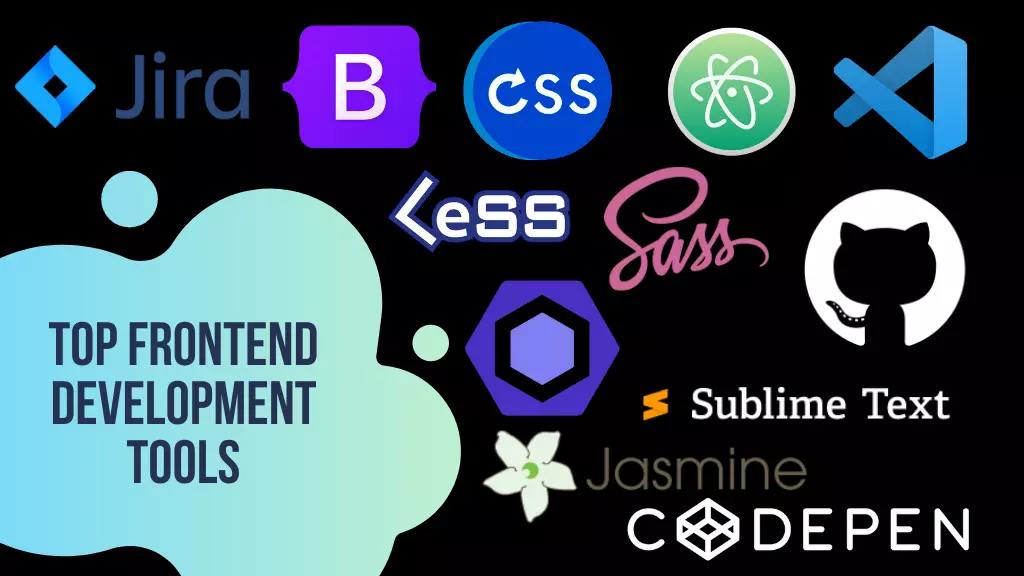
This image is property of ares.decipherzone.com.
React
React is an open-source JavaScript library developed by Facebook. It allows developers to build reusable and interactive user interfaces by creating reusable UI components with a declarative syntax. React uses a virtual DOM to efficiently update and render components, resulting in optimized performance and seamless user experiences. Its vast ecosystem of libraries and tools, including state management libraries like Redux, make it a powerful choice for building complex front end applications.
Angular
Angular, developed by Google, is a complete web application development framework that follows the Model-View-Controller (MVC) architectural pattern. It provides a comprehensive set of tools and features for building large-scale, enterprise-grade applications. Angular offers features like two-way data binding, dependency injection, and a robust templating system that allows for the creation of dynamic and responsive user interfaces.
Vue.js
Vue.js is a progressive JavaScript framework for building user interfaces. It emphasizes simplicity and flexibility, making it easy for front end developers to integrate it into existing projects. Vue.js offers features like declarative rendering, component-based architecture, and reactive data binding. Its gentle learning curve and extensive documentation make it an attractive choice for beginners and experienced developers alike.
UI Libraries
UI libraries provide pre-designed and reusable components that can be easily incorporated into web applications. They help developers create visually appealing and responsive user interfaces without having to build everything from scratch. Some popular UI libraries used by front end developers include Bootstrap, Semantic UI, and Material-UI.
Bootstrap
Bootstrap is one of the most widely used UI libraries in front end development. It provides a collection of CSS and JavaScript components that can be easily customized and integrated into various projects. Bootstrap offers a responsive grid system, pre-styled components like buttons and forms, and a wide range of themes and templates, making it a go-to choice for creating modern and responsive web applications.
Semantic UI
Semantic UI is another popular UI library that focuses on providing intuitive and natural language conventions for defining UI components. It aims to make the development process more straightforward and increase code readability. Semantic UI offers a comprehensive set of reusable components, including advanced features like theming and responsive design.
Material-UI
Material-UI is a UI library that implements Material Design, a design language developed by Google. It offers a wide range of pre-built components that adhere to the principles of Material Design. Material-UI provides an extensive set of customization options, including different color schemes and themes, allowing developers to create visually appealing and consistent user interfaces.
Graphic Design Tools
Front end developers often collaborate with graphic designers to bring their designs to life. For this purpose, graphic design tools are essential. Some commonly used graphic design tools in front end development include Adobe Photoshop, Sketch, and Adobe XD.
Adobe Photoshop
Adobe Photoshop is a powerful and versatile graphic design tool that provides a wide range of features for editing and manipulating images and graphics. Front end developers often use Photoshop to optimize and export images, create image assets for web pages, and design graphical elements for websites.
Sketch
Sketch is a macOS-exclusive graphic design tool that has gained significant popularity among front end developers. It offers an intuitive and user-friendly interface, making it easier to create and prototype designs for websites and mobile applications. Sketch provides features like artboards, symbols, and plugins that streamline the design process and facilitate collaboration with developers.
Adobe XD
Adobe XD, part of the Adobe Creative Cloud suite, is a design and prototyping tool for creating user interfaces and interactive experiences. It allows front end developers to design and prototype web and mobile applications, create interactive prototypes, and share them with clients or team members. Adobe XD provides features like responsive resizing, component libraries, and real-time collaboration, making it a valuable tool for front end development.
Prototyping Tools
Prototyping tools help front end developers create interactive prototypes of their web or mobile applications. These prototypes allow for user testing, feedback iteration, and validation of design decisions. Two popular prototyping tools used in front end development are InVision and Figma.
InVision
InVision is a widely used prototyping tool that allows front end developers to design and prototype user interfaces for web and mobile applications. It offers features like clickable interactive prototypes, real-time collaboration, and user testing tools. InVision facilitates the entire design-to-development workflow by allowing developers to share designs and collaborate with team members, clients, and stakeholders.
Figma
Figma is a cloud-based design and prototyping tool that provides real-time collaboration and intuitive design features. It allows front end developers to create and share interactive prototypes, collaborate with other team members, and inspect designs for accurate implementation. With its browser-based interface and seamless integration with other design and development tools, Figma has become a popular choice for front end developers.
In conclusion, front end developers rely on a wide range of software tools to streamline their workflow, enhance productivity, and create high-quality web applications and websites. From IDEs and text editors to version control systems, package managers, command line tools, browser developer tools, CSS preprocessors, JavaScript frameworks, UI libraries, graphic design tools, and prototyping tools, these software tools play a critical role in the success of front end development projects. By leveraging the power and capabilities of these tools, front end developers can create cutting-edge and visually appealing user interfaces that deliver exceptional user experiences.
